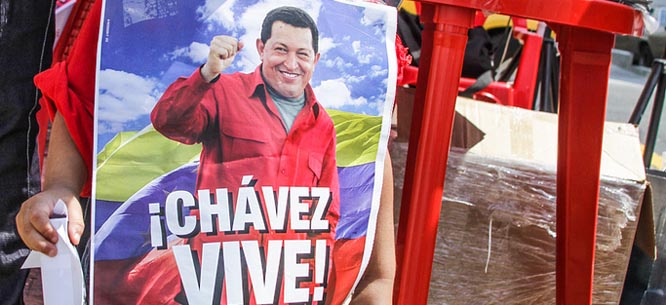From Chavismo to a Democratic Left in Venezuela
From Chavismo to a Democratic Left in Venezuela

In April, Hugo Chávez’s handpicked political heir, Nicolás Maduro, was elected president of Venezuela in an unexpectedly close race. Maduro will try to continue the Chavismo revolution, amid accusations of electoral fraud and the extreme polarization of the political landscape. But to be successful, he needs to speed the transformation of his party, the Partido Socialista Unido de Venezuela (PSUV) from an institution bound to the memory of its flawed yet charismatic founder into one that maintains a clear division of power and vigorous internal debate.
During the four decades before Chávez took power in 1998, two center-right parties—Democratic Action (AD) and the Social Christians (COPEI)—shared power under an arrangement known as Puntofijismo (after a pact signed in the Caracas home of former president Rafael Caldera). With strong backing from the United States, the coalition came close to privatizing the powerful oil industry and, by the time it fell from power, had presided over triple-digit inflation, high unemployment, and a profound division between the rich and the poor.
During Chávez’s fifteen years in power, Venezuela’s political institutions went through structural transformations of a revolutionary magnitude. The PSUV now controls—often by small electoral margins—97 out of 165 seats in the National Assembly, 20 out of 23 states, and all but one state council (or legislature).
To his admirers, Chávez represented an unprecedented hope for the desperately poor—and was the champion of a revived Latin American Left. But to his critics, he was a totalitarian Marxist with an iron grip over the oil-rich revenues of his nation. Chávez was variously called the new Bolívar, Castro’s successor, an authoritarian dictator, a charismatic leader, a crafty politician, a buffoon, and—most frequently—a ranting populist.
But Chavismo was no mere regression to an earlier era dominated by such charismatic populist figures as Argentina’s Juan Perón and Mexico’s Lázaro Cárdenas. It is a new and genuinely radical mass movement, which captivated the poor and the excluded with a syncretic ideology inspired by three nineteenth-century icons: Simón Bolívar, the hero of independence; Ezequiel Zamora, the civil war leader; and Simón Rodríguez, Bolívar’s tutor. Bolívar contributed to nationalism and to independence from imperial dominance, Zamora fought for social justice and the unity of peasants with the army, and Rodríguez led the drive for educating the masses and championed the search for a unique Venezuelan identity.
The Left in Latin America espouses, to different degrees, three ideologies: liberalism, grassroots democracy, and populism. Although Chavismo incorporates elements of all three, it gives priority to radical populism—a type of popular sovereignty that favors mechanisms for direct political participation, opposes negotiated pacts and...
Subscribe now to read the full article
Online OnlyFor just $19.95 a year, get access to new issues and decades' worth of archives on our site.
|
Print + OnlineFor $35 a year, get new issues delivered to your door and access to our full online archives.
|






